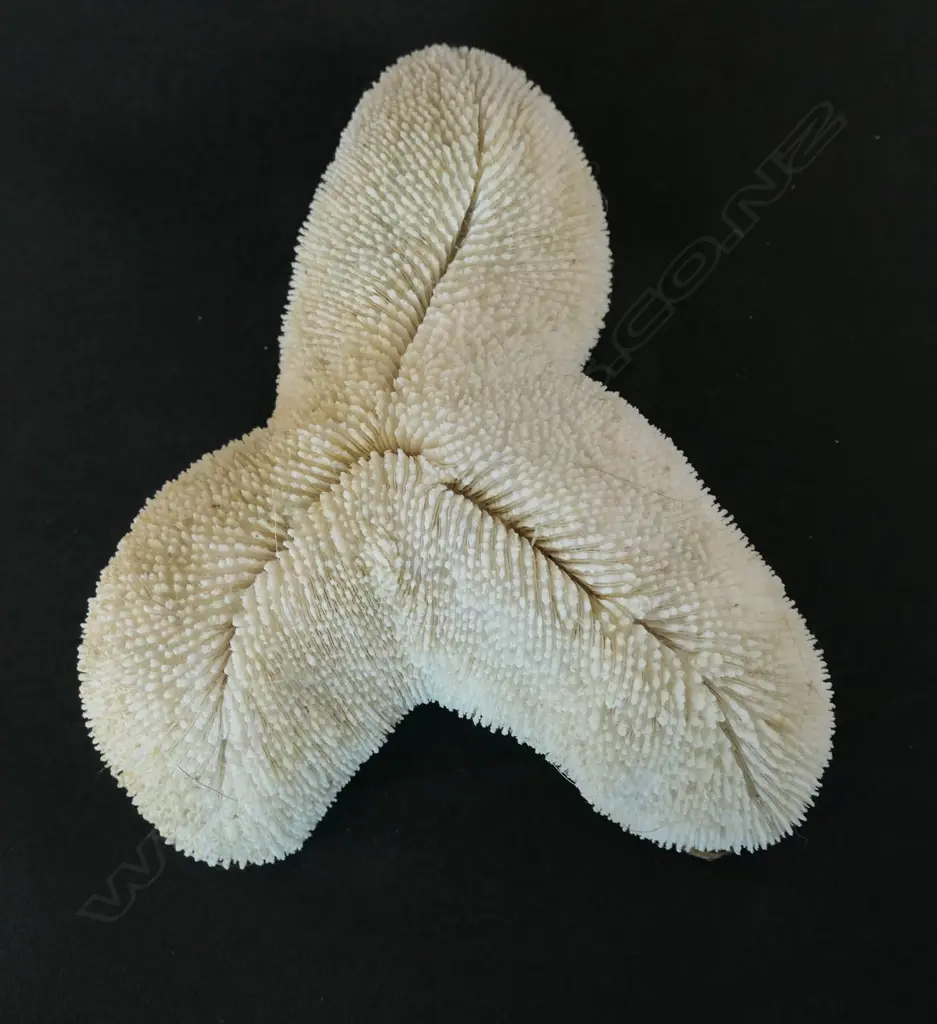ETHNOGRAPHIC ART AND ARTEFACTS
Friday, 20 - Monday, 30 September 2024
A piece of rare hard stony triangular coral,
Current Bid $400 (41 bids, reserve met)
This lot is now closed 30 Sep 7:18 PM (NZST)
Buyer premium and GST is additional to your bid.
All bids are subject to our buyer terms and conditions
Lot Details
ex. Marshall Islands 1974, L.190mm. Provenance: Collected by Prof. Darwin Scott Linthicum, B.A., Ph.D. As a young lad growing up in Southern California near the coastal town of Malibu, I always wanted to be a marine biologist. Jacques Cousteau was my hero. He sailed the seven seas, explore exotic islands, visited strange peoples, and made the underwater world exciting. By the time I was only 16 years of age I was doing research on marine fishes at the University of California Los Angeles, and the Marineland Aquarium in Palo Alto; these studies resulted in my first scientific publications one year later. Soon thereafter I found myself involved in a research project at Enewetak atoll in the Marshall Islands (Micronesia), at the Mid-Pacific Marine Laboratory. Our studies on corals and other sea life led to my collection consisting of many scores of specimens related to our research (some of which are part of the collectables offered at Cordy’s). Enewetak was the site of hundreds of nuclear tests in the 1950s and 1960s, along with the famous Bikini atoli, and some parts of these atolls remain dangerously radioactive to this day. https://www.nuclear-risks.org/en/hibakusha-worldwide/bikini-and-enewetak-atolls.html#:~:text=The%20atoll%20of%20Enewetak%20was,had%20to%20be%20relocated%20several https://www.theguardian.com/world/2015/jul/03/runit-dome-pacific-radioactive-waste I also had the opportunity to be involved in marine biology research on coral and sponges at the University of Hawaii, Hilo campus, and the Marine Research Institute in Palau, Western Caroline Islands, of Micronesia; these studies also resulted in scientific publications and collection of specimens, some of which are in my collection. While I was studying at the Walter and Eliza Hall Institute for Medical Research in Melbourne, Australia, I became fascinated with Papua New Guinea and the brain disease Kuru. Over the next several years (1982-1986) I visited the Medical Institute in Goroka of the Eastern Highlands province, gave seminars on my neuroscience research, and travelled extensively in PNG. I was able to come to know Doctor Carlton Gajdusek who awarded the Nobel Prize in medicine for his work on Kuru. His prolific stories of PNG were famous and could keep one engaged into the wee hours of the night; I have never known a person with such an encyclopaedic mind. Most of my collection of PNG artefacts come from this time period. https://en.wikipedia.org/wiki/Kuru_(disease) I have been fortunate to have travelled to many countries around the world, been invited to give scientific lectures, organise and participate in academic courses to many international students during these travels. I am pleased to offer some much-loved parts of my collection to those interested… time for someone else to love them’.

